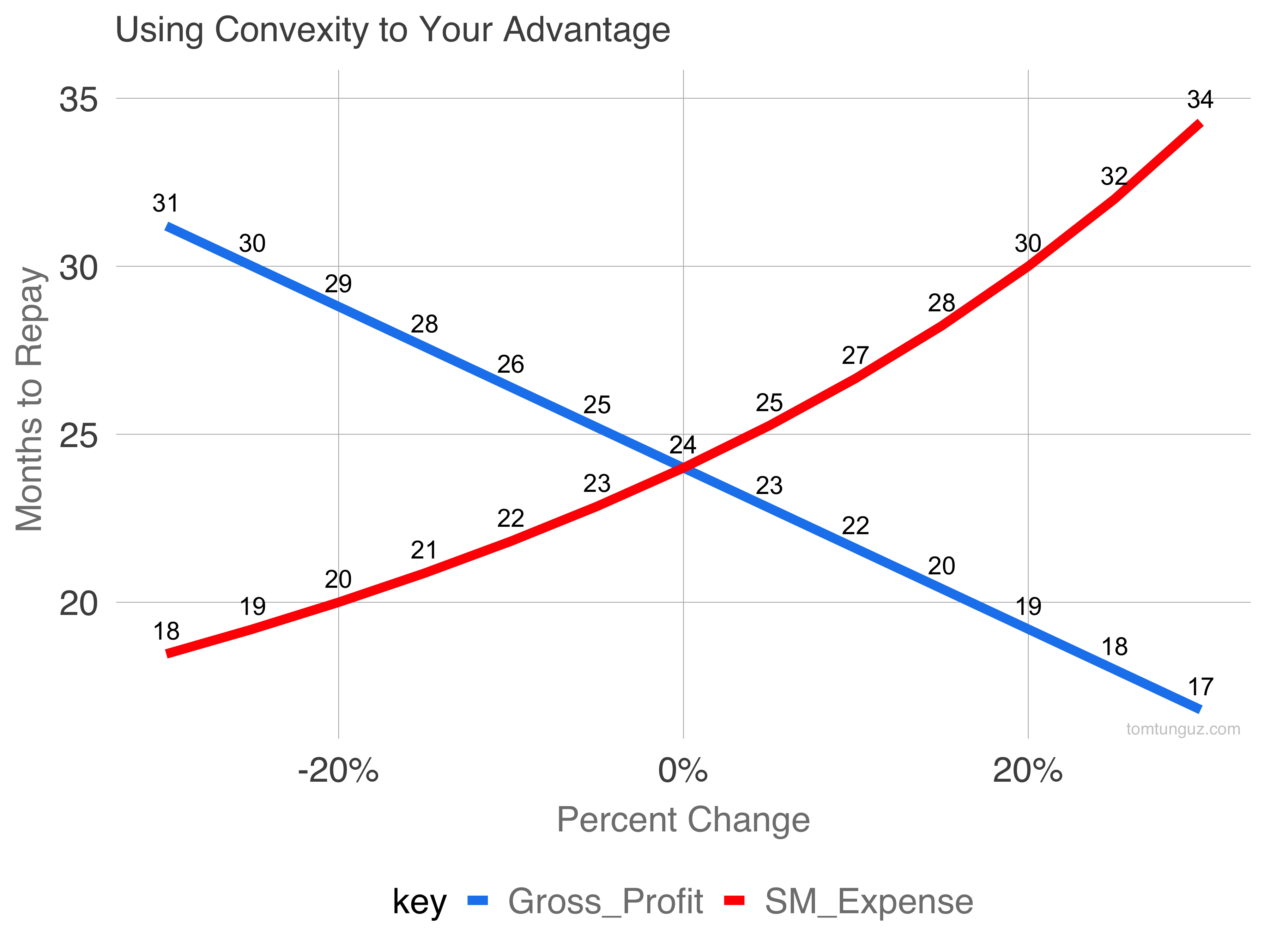With all the talk of recession, changing market dynamics, and the importance of efficient growth, many teams will be looking to boost their sales efficiency. How can the company drive more sales with less expense?
Let’s start with the formula for sales efficiency.
Sales efficiency = New_Bookings x Gross_Margin / Sales_and_Marketing_Cost
Three paths emerge from the equation:
- Increase bookings: increase pricing without sacrificing sales velocity.
- Improve gross margins: reduce infrastructure spending, eliminate software bills, and/or reduce customer success costs.
- Decrease sales & marketing cost: increase quotas, focus on marketing channels with superior ROI (at the expense of exploration), and improve sales training/support.
Each strategy is viable. Teams should select the path or combination that suits their business best. But these strategies won’t impact the sales efficiency number the same way. Why? Convexity.
Convexity is a fancy word to mean one of these variables is a curve, not a straight line. Sales_And_Marketing_Cost is in the denominator, so it’s curved. A 10% increase or decrease in the cost won’t have a 10% impact on sales efficiency. New_Bookings and Gross_Margin move Sales_Efficiency linearly.
Let me show you the difference with a chart.

The x-axis shows a percent change from -30% to +30% from the baseline at 0 in both Gross_Profit and SM_Expense. The height of the chart is the months to repay (MTR) the cost of customer acquisition. MTR = 1/Sales_Efficiency x 12
Notice the red line SM_Expense curves. That’s the convexity.
This startup has a 24 month payback period to start. If the startup reduces SM_Expense by 20%, MTR drops by 17% to 20 months – not linear! Increasing gross margin by 20% reduces MTR by a full 20% to 19.2 months. That’s convexity at work.
Convexity works against the business in a deterioration scenario, too. Suppose SM_Expense surges 20%. MTR spikes to 30 months, a 25% increase – not linear again. If Gross Margin contracts 20 percent, moves in lock step to 28.8 months, a 20 percent increase.
The differences between these scenarios are a month in each case.
The point isn’t to fully focus on Gross_Margin vs SM_Expense. Rather, consider gross margin an important driver for paybacks; especially if the company anticipates big swings in either metric. The greater the delta from today in either one, the greater the convexity effect.
As more startups peer into the components of their gross margin, Startupland should expect pressure on infrastructure costs – a direct result of sales efficiency optimization.